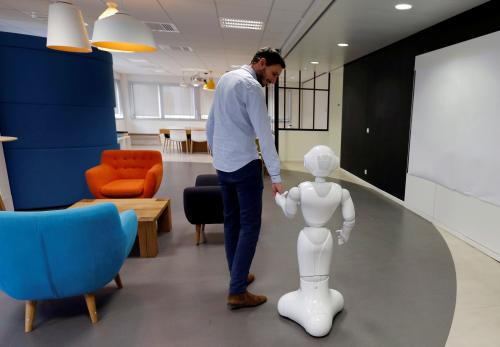President Obama recently proposed to help more workers save for retirement through an executive order creating the myRA. The plan is being billed as the ROTH IRA for every man or woman with neither access to a 401(k) plan at their workplace nor the lump-sum deposit to open an IRA on their own.
Though well-intentioned, this isn’t the best way to encourage workers to save more—it’s just a politically easier route. A better way is to automatically enroll workers with a retirement plan through payroll deductions and give them the option to opt out. Congress has considered such a plan for years, but it has never gone anywhere and it’s tough to see how things could turn around given the partisan bikering we’ve seen in Washington.
Nonetheless, an automatic Individual Retirement Account (IRA) is worth re-evaluating as the president makes his pitch for myRa. Half of America’s full-time employees, about 75 million, arenot offered any type of retirement plan at work (except for Social Security). Although many work at small firms with fewer than 10 employees, some work at larger firms. Over 20% of American employers with 100 or more employees—mainly in agricultural, construction and retail sectors –do not offer any type of retirement plan at work.
In theory, these 75 million employees are legally entitled to open an IRA, which offer contributors substantial tax benefits. However, less than 5% of these 75 million employees actually open a tax-advantaged IRA. Why? Inertia. It takes time and energy to go to a financial institution, fill out an application and make a few choices.
Countless studies have shown that participation rates are much higher if employees are automatically enrolled in a retirement plan, but then given the opportunity to opt out.
Here’s what a bill to establish the automatic IRA could look like:
- All employers above a certain size ( e.g., over 10 or 20 full-time employees ) would be required to link their payrolls electronically to a qualified financial institution offering an IRA meeting certain criteria. But this requirement would not apply to any employer already offering a retirement plan.
- Participating employers would presumptively deduct a specific percentage ( e.g., 2% ) of the monthly salaries of full-time employees as contributions to an IRA. However, these employees would have several months to decide to opt out, or choose a lower level, of these presumptive contributions to an IRA.
- To constrain administrative costs, all contributions to an Automatic IRA would be at least $25 per pay period. To defray the start-up costs for the new program, each participating employer would receive a modest one-time tax credit ( e.g., $300 ).
All three of these features would need Congress’ blessings, but due to the ongoing partisan bickering, lawmakers seems incapable of passing non-essential bills. The president’s myRA proposal is a pale shadow of an automatic IRA. Here are a few critical differences:
- Under myRa, employers would be encouraged to connect their payroll systems to their retirement accounts maintained by the U.S. Treasury. However, myRa is an entirely voluntary, not mandatory program so it’s uncertain how many would enroll.
- Even if employers chose to participate in myRA, their employees would need to affirmatively authorize payroll deductions going to this program. This would be an opt-in, not an opt-out process.
- The minimum contribution to a myRA doesn’t boost very much savings; it would be $10 per payroll period, after an initial $25 contribution. And participating employers would not receive a tax credit to defray the start-up costs of joining the myRA program.
To substantially increase retirement savings in America, Congress should adopt the Automatic IRA with its more effective features.



Commentary
Op-edWhy myRA is Not the Way to Save for Retirement
February 21, 2014